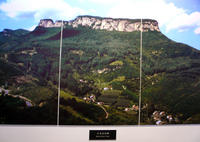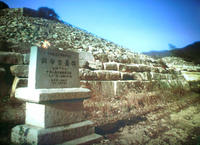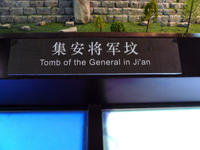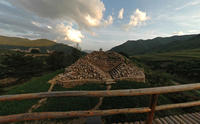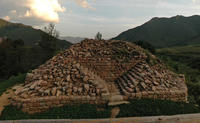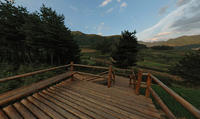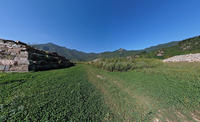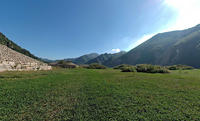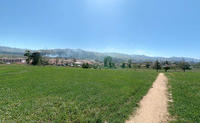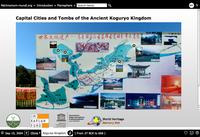You are in: Asia -> China -> Capital Cities and T... , and traditional search or Image Gallery will yield results of this site only
Capital Cities and Tombs of the Ancient Koguryo Kingdom
| Site number: | 1135 |
|
| Type of site: | Cultural | |
| Date: | 37 BC-668 AD | |
| Date of Inscription: | 2004 | |
| Location: | Asia, China, Huanren County, Liaoning Province and Ji’an, Jilin Province | |
Up to 75 images are shown here. Click on each for more details or on Image Gallery for more images.
| Description: | The site is composed of archaeological remains left from three cities and 40 tombs, among them the Wunu Mountain City, Guonei City and Wandu Mountain City, 14 imperial, and 26 noble tombs. The site is associated with the Koguryo culture, which is the dynasty that ruled from 37 BC to 668 AD over parts of northern China and the northern half of the Korean Peninsula. Currently only a part of Wunu Mountain City is excavated. After the main Koguryo capital moved to Pyongyang, Guonei City, now part of the modern city of Ji’an, played the role of a supporting capital. Wandu Mountain City (which was also a capital of the Koguryo Kingdom) contains many relics comprising a large palace and 37 tombs. The tombs with elaborate ceilings were designed with wide roof spaces that could without columns carry the heavy load of a stone or earth tumulus (mound) which was placed above them. --WHMNet paraphrase from the description at WHC Site, where additional information is available. For 360 degree imaging of this site, click here. | |
| Capital Cities and Tombs of the Ancient Koguryo Kingdom is a World Heritage Site (identification number 1135) located in the People's Republic of China. The designated area of the site is located in and around Ji'an, Jilin. The site was designated as a cultural World Heritage Site in 2004, qualifying as such under the first five of the six criteria for cultural heritage sites. The site contains the archaeological remains of three cities (Wunu Mountain City, Guonei City, and Wandu Mountain City), and forty identified tombs of Koguryo imperial and noble families. The site includes archaeological remains of 40 tombs: 14 tombs are imperial, and 26 are nobles. Which were built by Koguryo, A kingdom that ruled over parts of northern China and the northern half of the Korean Peninsula from 37 BC to 668 AD. Some of the tombs have elaborate ceilings, designed to roof wide spaces without columns and carry the heavy load of a stone or earth tumulus (mound) which was placed above them. The tombs, particularly the important stele and a long inscription on one of the tombs, shows influence of Chinese culture on Koguryo. The paintings in the tombs, while showing artistic skills and specific style, are also an example of strong influence from various cultures. The tombs represent a masterpiece of the human creative genius in their wall paintings and structures. --Wikipedia. Text is available under the Creative Commons Attribution-ShareAlike License. For 360 degree imaging of this site, click here. | ||
| Source: | http://whc.unesco.org/en/list/1135 | |
| Reference: | 1. UNESCO World Heritage Center, Site Page. | |




